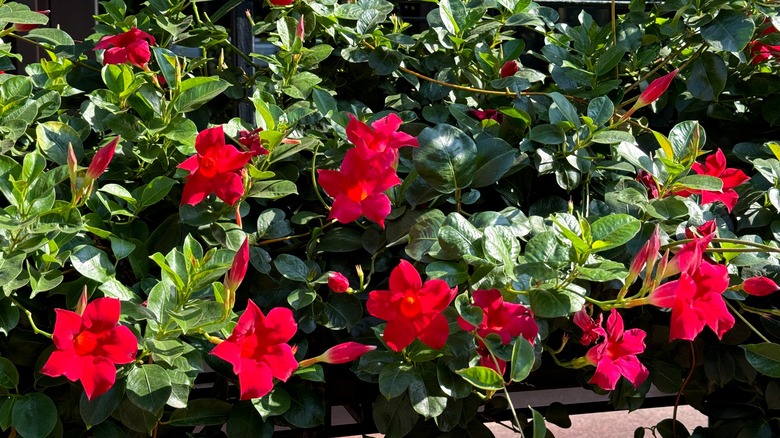How To Protect Your Beautiful Mandevilla Flowers During Chilly Winters
Mandevilla flowers, with their vibrant blooms and lush foliage, love the warm weather and are a favorite among gardeners. However, these tropical bright flowering vines are sensitive to cold temperatures and require specific care during winter months if you want it to survive. Understanding the basic care your mandevilla plant needs and how to protect it during the winter months will help this perennial plant remain healthy and thriving all year long. To get your mandevilla flower ready for winter you'll need to choose somewhere to put it, then prepare the plant to move indoors, and care for it over winter.
Your mandevilla won't appreciate climates any less than a Zone 9 and won't do well under 50 degrees Fahrenheit. So, living in the northern hemisphere, you'll probably want to grow these babies in a pot to make overwintering them a success. Before the temperatures drop, consider where you can move your mandevilla to protect your plant from frost. This could be indoors or a sheltered location like a garage. But again, watch those temperatures so they don't dip too far below their tolerance threshold. You'll also want to make sure the indoor location is bright so the plant can get plenty of direct or indirect sunlight. Avoid placing it in drafty areas or next to vents, as sudden temperature changes may cause the plant to stress. Since winters often provide a rather dry atmosphere, your mandevilla might appreciate a humidifier nearby to provide moisture in its surroundings. If you do plan to keep it outside during the winter, placing it near a southern-facing wall can help provide some natural warmth when the sun's out.
Caring for your mandevilla flower over winter
Before moving your mandevilla plant indoors, you'll need to give it a haircut, so to speak. Prune your plant back until it's about 12 inches tall from the base, which will help prevent it from being a mess when it drops its leaves inside. Once it's trimmed up, thoroughly inspect your plant for bugs. It's best to do this before the temperatures drop so you can treat your plant for pests and diseases before bringing them inside. It's a good idea to wash the pot and soak the plant to help remove any debris and lingering bugs. Once your plant is in the clear, go ahead and start bringing it inside for a few hours each day to help it adjust to the internal lighting and humidity levels.
During winter, water your mandevilla plant sparingly and allow the soil to slightly dry out between waterings to prevent root rot. You can mist the leaves, or use a humidity tray to raise the humidity in your home so your plant can thrive. Following your thorough pest inspection, you'll still want to regularly check for bugs and remove any dead or yellowing leaves to keep your plant healthy throughout winter.
As spring gradually approaches, reintroduce your mandevilla flower outdoors to begin reacclimating to the brighter light and fluctuating temperatures. You can also prune any leggy growth to encourage bushier development. Begin fertilizing and regularly watering as the weather warms. By caring for your mandevilla plant during the chilly winters, you'll promote its vibrant blossoms in the following year.

